Sign In
Welcome to AI Checker Sign in to continue your exploration of our platform with all its exciting features.
Forgot Password?
Don’t have an account ? Sign Up
Forgot Password
We'll Send You An Email To Reset Your Password.
Back to Login
Sign Up
Embrace the Future with AI Checker Sign up now and let's rewrite the possibilities together.
Already have an account? Sign In
Enter OTP
We'll send you an email to reset your password.
Back to Login
Enter OTP
We'll send you an OTP on your registered email address.
Back to Login
Confirm Password
Please enter your new password.
How Freelancers Can Make AI Content Look 100% Human
 Nathan Porter
Nathan Porter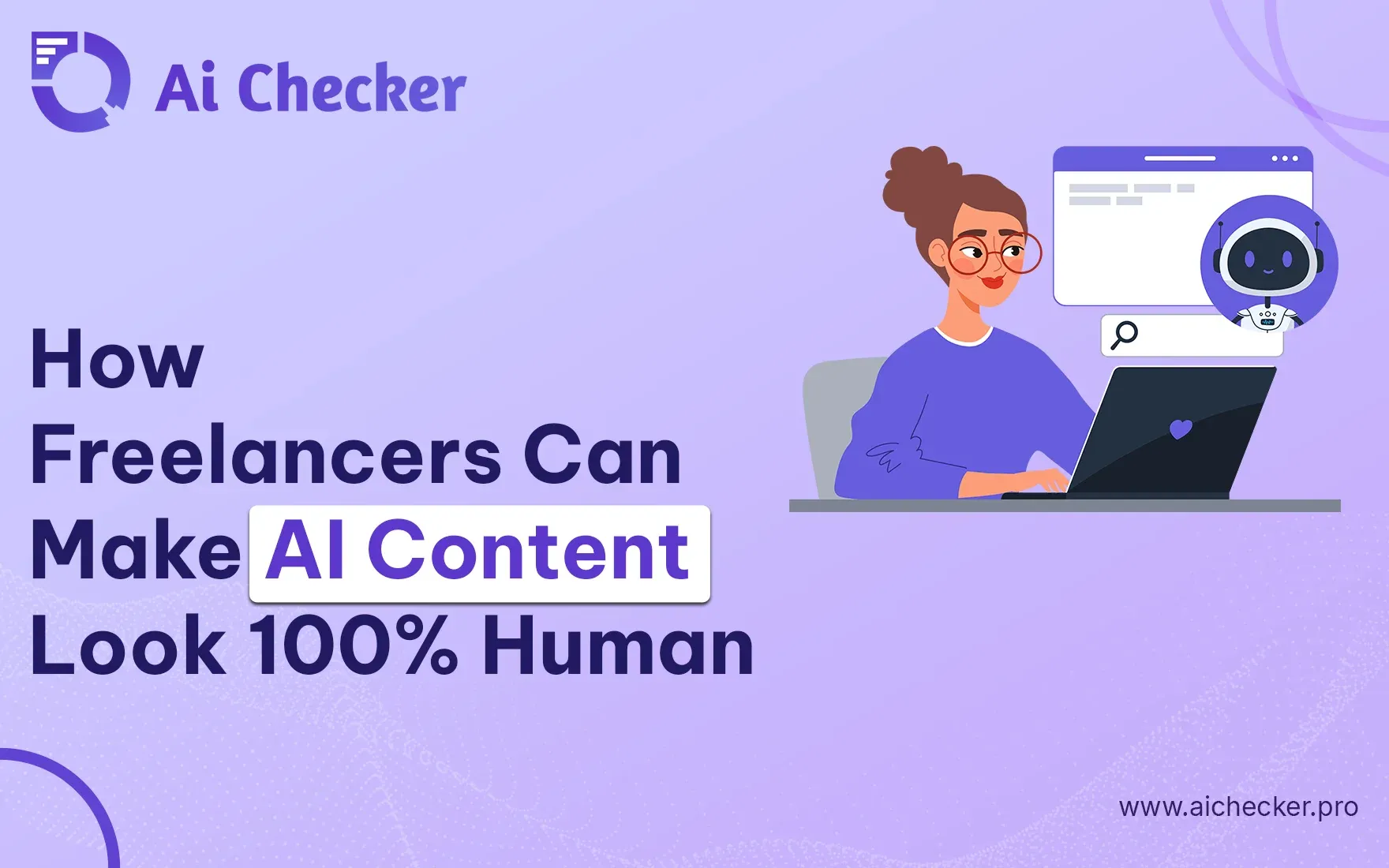
TABLE OF CONTENTS
What Does "100% Human" Content Mean?
Why AI Content Gets Flagged as Non-Human
How Freelancers Can Check If Their AI Content Looks Human
Best Techniques to Make AI Content Look Human
Tools and Plugins to Help Humanize AI Content
Should You Always Humanize AI Content?
Common Mistakes Freelancers Make While Humanizing AI Content
Conclusion
FAQs
The freelancing world has been revolutionized by AI writing tools. From ChatGPT to Jasper, these platforms can generate content in seconds, helping freelancers meet tight deadlines and scale their operations. But here's the catch – while AI can write fast, it doesn't always write like a human.
As a freelancer, you're walking a tightrope. You need the efficiency of AI tools to stay competitive, but you also need content that passes the "human test" with both clients and search engines. The good news? You don't have to choose between speed and authenticity. With the right techniques, you can harness AI's power while ensuring your content sounds genuinely human.
This guide will show you exactly how to transform AI-generated text into compelling, human-like content that resonates with readers and satisfies the most discerning clients. Whether you're a seasoned freelancer or just starting out, these strategies will help you deliver content that no one would ever suspect came from an AI.
What Does "100% Human" Content Mean?
When we talk about "100% human" content, we're not necessarily referring to content written entirely by human hands. Instead, we're talking about content that reads, feels, and engages like it was crafted by a human mind – regardless of the tools used in its creation.
Human content has several distinct characteristics that set it apart from AI-generated text. It flows naturally, like a conversation you'd have with a knowledgeable friend. The tone adapts to the audience – professional when needed, casual when appropriate, and always authentic.
Real human writing includes personal experiences, specific examples, and unique perspectives that come from lived experience. It shows personality quirks, occasional imperfections, and the kind of insights that only come from actually working in a field or living through certain situations.
Most importantly, human content connects emotionally with readers. It acknowledges their struggles, celebrates their successes, and speaks to their aspirations in a way that feels genuine and understanding.
The goal isn't to deceive anyone about using AI assistance – it's to ensure that your final product provides the same value, engagement, and authenticity that readers expect from human-created content.
Why AI Content Gets Flagged as Non-Human
Understanding why AI content gets detected is crucial for learning how to avoid these pitfalls. AI detection happens for several predictable reasons, and once you know what to look for, you can systematically address each issue.
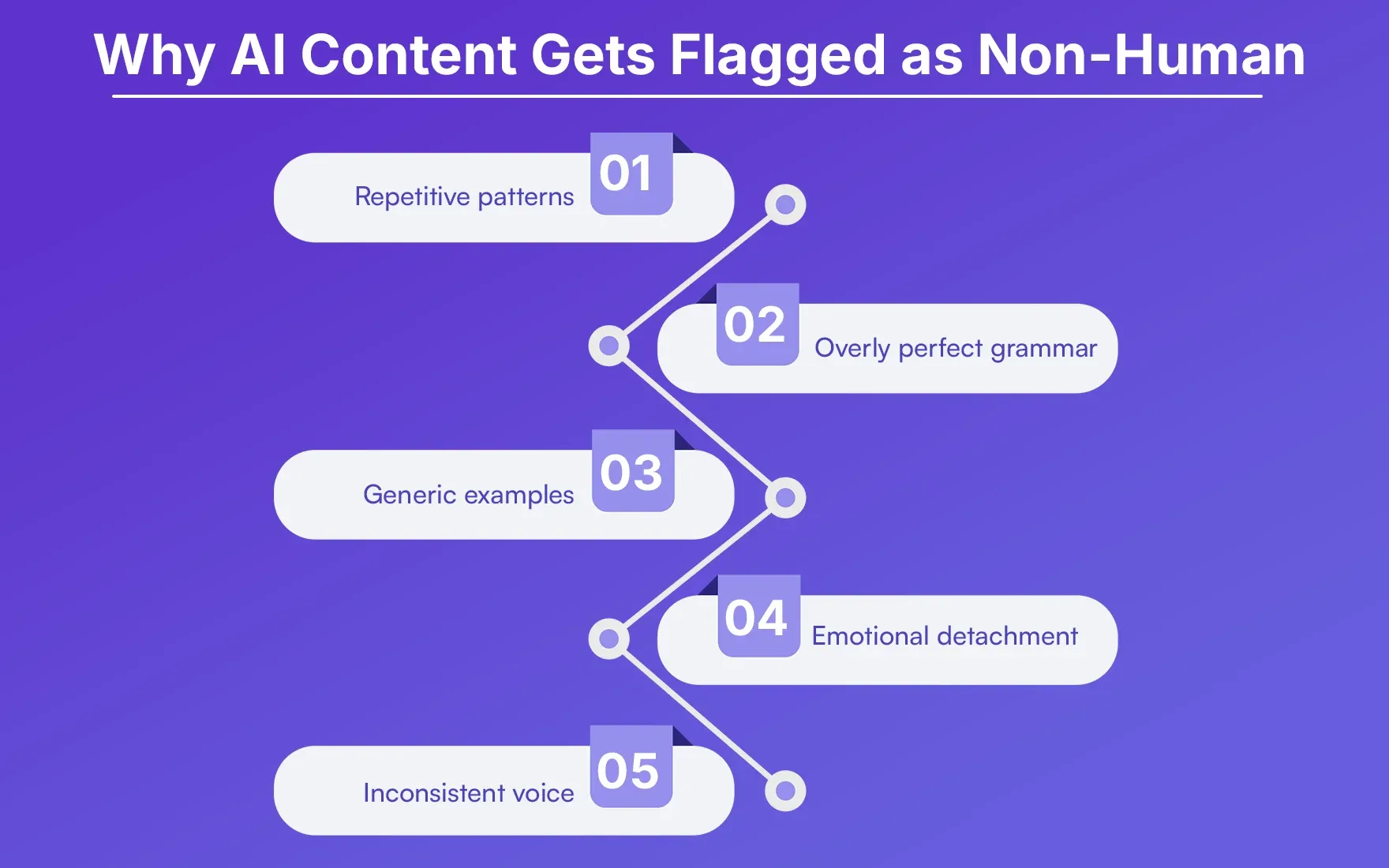
Here are the main reasons AI content gets flagged:
Repetitive patterns - AI models use similar sentence structures, transitions, and phrasing across different content pieces. Common phrases include "It's important to note," "Furthermore," or "In conclusion," creating a mechanical rhythm that feels artificial.
Overly perfect grammar - While good grammar is important, AI tends to be flawless in a way that feels sterile. Real people use contractions, sentence fragments, and occasional run-on sentences when excited about topics.
Generic examples - AI often provides vague examples like "many businesses struggle with social media" instead of specific scenarios like "I watched a local restaurant owner spend two hours trying to create one Instagram post."
Emotional detachment - AI can discuss emotional topics but rarely conveys genuine feeling or personal investment. The writing feels informative but not passionate or personally connected.
Inconsistent voice - AI often struggles to maintain a coherent personality throughout longer pieces, switching between formal and casual tones unpredictably.
Search engines like Google are also getting better at detecting AI content through algorithmic analysis of writing patterns, vocabulary usage, and content structure. While they claim not to penalize AI content directly, they do prioritize content that demonstrates expertise, authority, and trustworthiness – qualities that are harder to achieve with unmodified AI text
How Freelancers Can Check If Their AI Content Looks Human
Before you can improve your content, you need reliable ways to evaluate its human-likeness. Here are several methods to assess your AI-generated content:
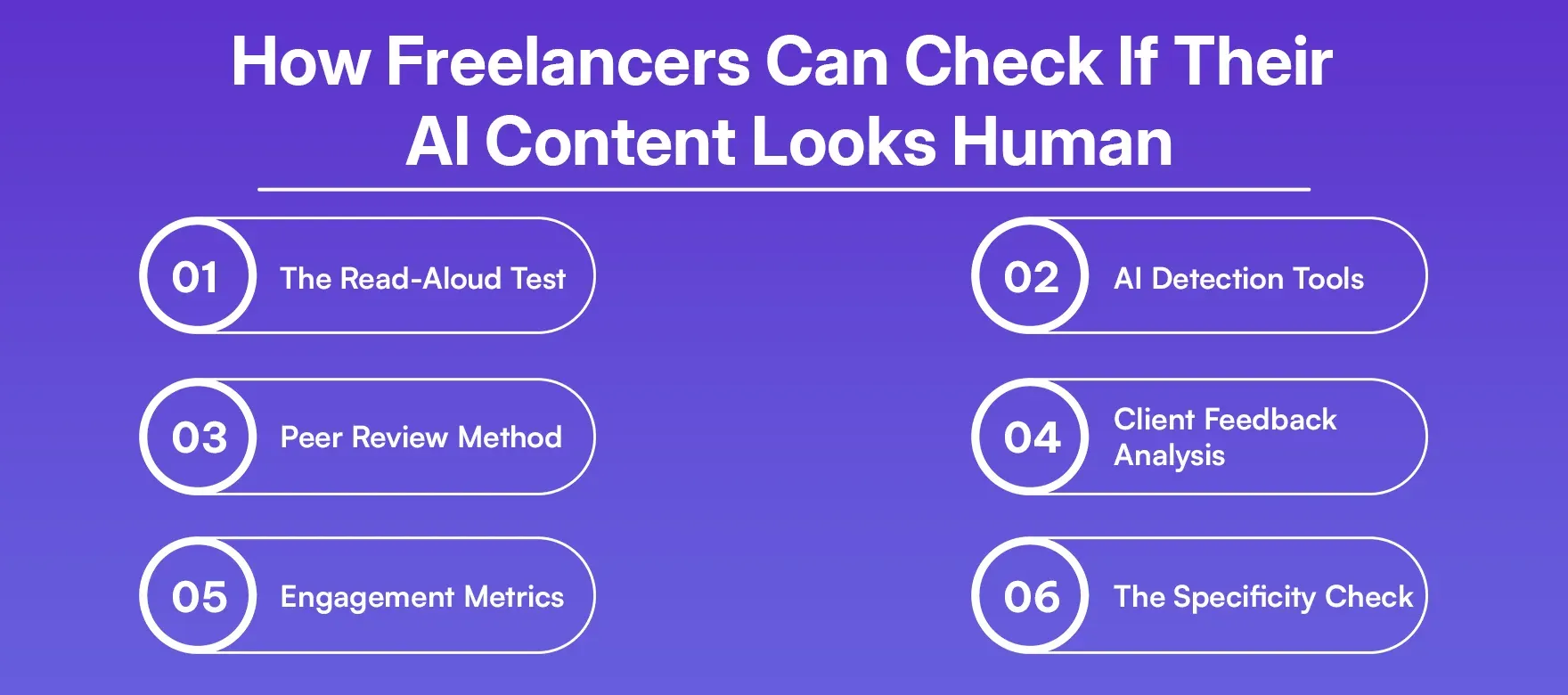
Here are proven methods to check if your content sounds human:
The Read-Aloud Test - Read your content out loud as if having a conversation. If it sounds natural and conversational, you're on track. If it sounds like a corporate press release, it needs work.
AI Detection Tools - Use tools like Originality.ai, GPTZero, and Copyleaks to get probability scores for AI generation. Remember these aren't perfect but provide useful feedback.
Peer Review Method - Ask fellow freelancers or friends to read your content without knowing it was AI-assisted. Their honest feedback about tone and authenticity is invaluable.
Client Feedback Analysis - Pay attention to revision requests focusing on tone or voice. Comments like "doesn't sound right" often indicate content needing humanization.
Engagement Metrics - Monitor if AI-assisted content gets lower engagement, shorter time-on-page, or higher bounce rates compared to human-written pieces.
The Specificity Check - Examine content for generic statements and vague examples. Human writers include specific details, numbers, names, and concrete examples.
Best Techniques to Make AI Content Look Human
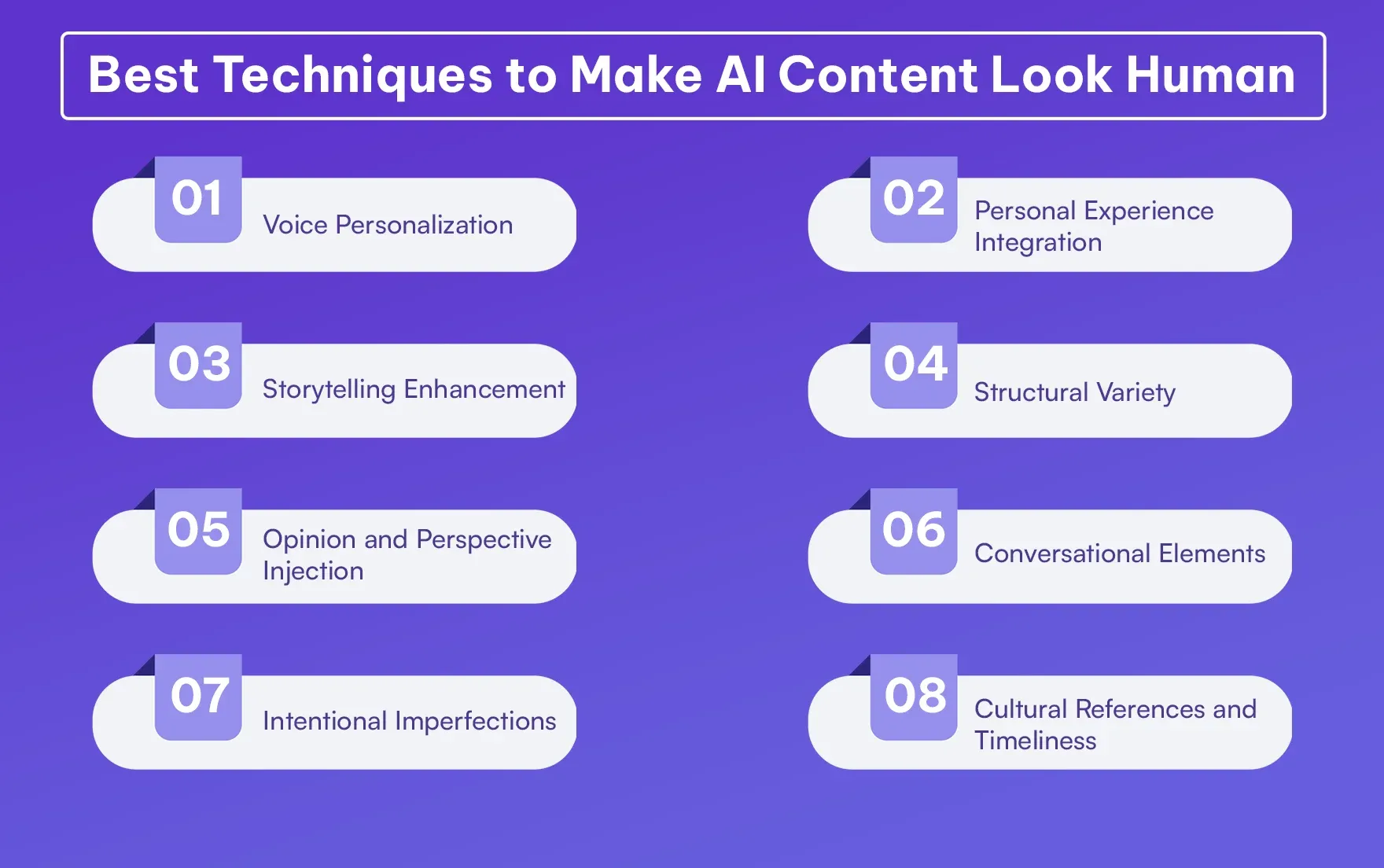
Voice Personalization
Start by aligning your tone with your target audience’s communication style. For instance, if you're addressing busy executives, opt for concise, action-oriented language. For creative entrepreneurs, infuse your writing with vibrant, inspiring terminology. Swap out stiff AI-speak for natural phrasing.
Use audience-specific tone and vocabulary
Replace phrases like “It is recommended that one should” with “You might want to consider”
Match the energy and pace of your readers’ typical conversations
Personal Experience Integration
This is where your human touch matters most. Replace generic advice with personal anecdotes or detailed hypothetical scenarios. It brings authenticity and relatability to your message.
Use specific examples from your life or work
Turn “Freelancers struggle with time management” into a story like:
“Last week, I found myself at 11 PM still working on a project that should have taken three hours…”Ground abstract advice in concrete experiences
Storytelling Enhancement
Dry facts don’t stick—but stories do. Use the problem-agitation-solution method to build emotional connections with readers.
Start with a relatable challenge
Stir emotions by highlighting the impact or frustration
Present a clear, satisfying resolution
Add sensory details and emotional cues to deepen engagement
Structural Variety
AI content often feels monotonous. Break that rhythm. Make your writing dynamic by varying sentence and paragraph structures.
Mix short, punchy sentences with longer, more flowing ones
Use sentence fragments occasionally for emphasis
Begin sentences with “And” or “But” for a casual, conversational tone
Use single-sentence paragraphs for impact
Opinion and Perspective Injection
AI lacks personal beliefs—don’t be afraid to show yours. Opinions lend credibility and create a unique voice that stands out.
Use statements like “In my experience,” or “Here’s what most people get wrong…”
Don’t shy away from offering a debatable stance
Let readers know there’s a human behind the words
Conversational Elements
Make your readers feel like they’re in a dialogue with you, not being talked at. Use techniques that mimic natural speech.
Ask rhetorical questions:
“But here’s the real question – how do you actually implement these strategies?”Use casual transitions:
“Here’s the thing,” “Now, you might be wondering,” “Let me be honest with you”Engage as if you're speaking one-on-one
Intentional Imperfections
Perfect grammar can sometimes feel cold. Embrace a few flaws that reflect genuine, human expression.
Include the occasional run-on sentence to convey excitement
Use parenthetical thoughts to show your internal process
Use contractions naturally and freely
Start sentences with conjunctions when it sounds right
Cultural References and Timeliness
Show readers your content isn’t frozen in time. Make references that prove you’re tuned into the world as it is right now.
Mention trending topics, current events, or popular shows
Use recent cultural touchpoints your audience will recognize
Reinforce your content’s relevance and human origin
Tools and Plugins to Help Humanize AI Content
1. AI Checker Pro
AI Checker Pro offers fast and reliable AI content detection, helping writers and editors ensure their work passes human authenticity checks with ease.
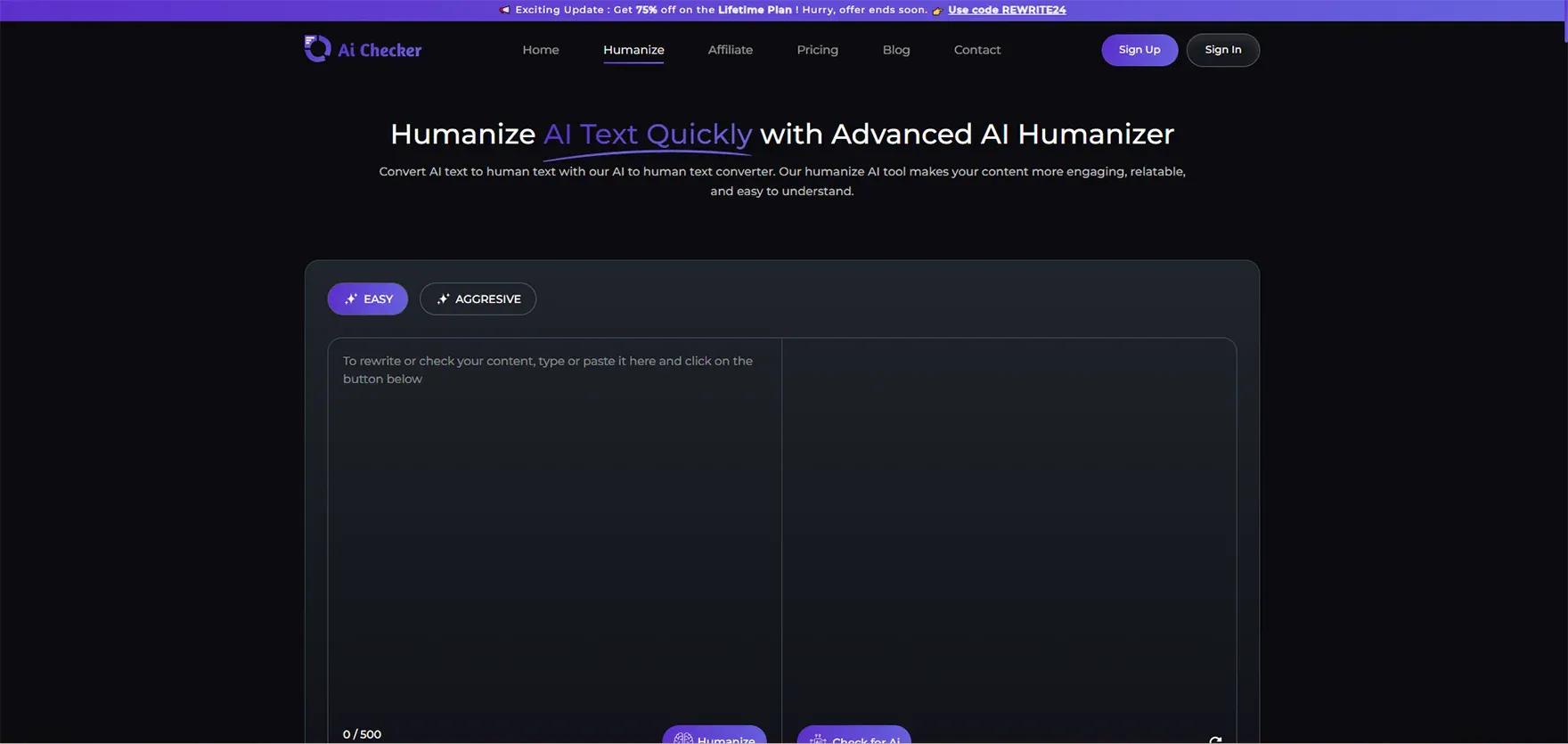
2. AssignmentGPT AI
AssignmentGPT AI is specially designed to detect AI-generated assignments and provides rewriting suggestions to make student work look fully human.
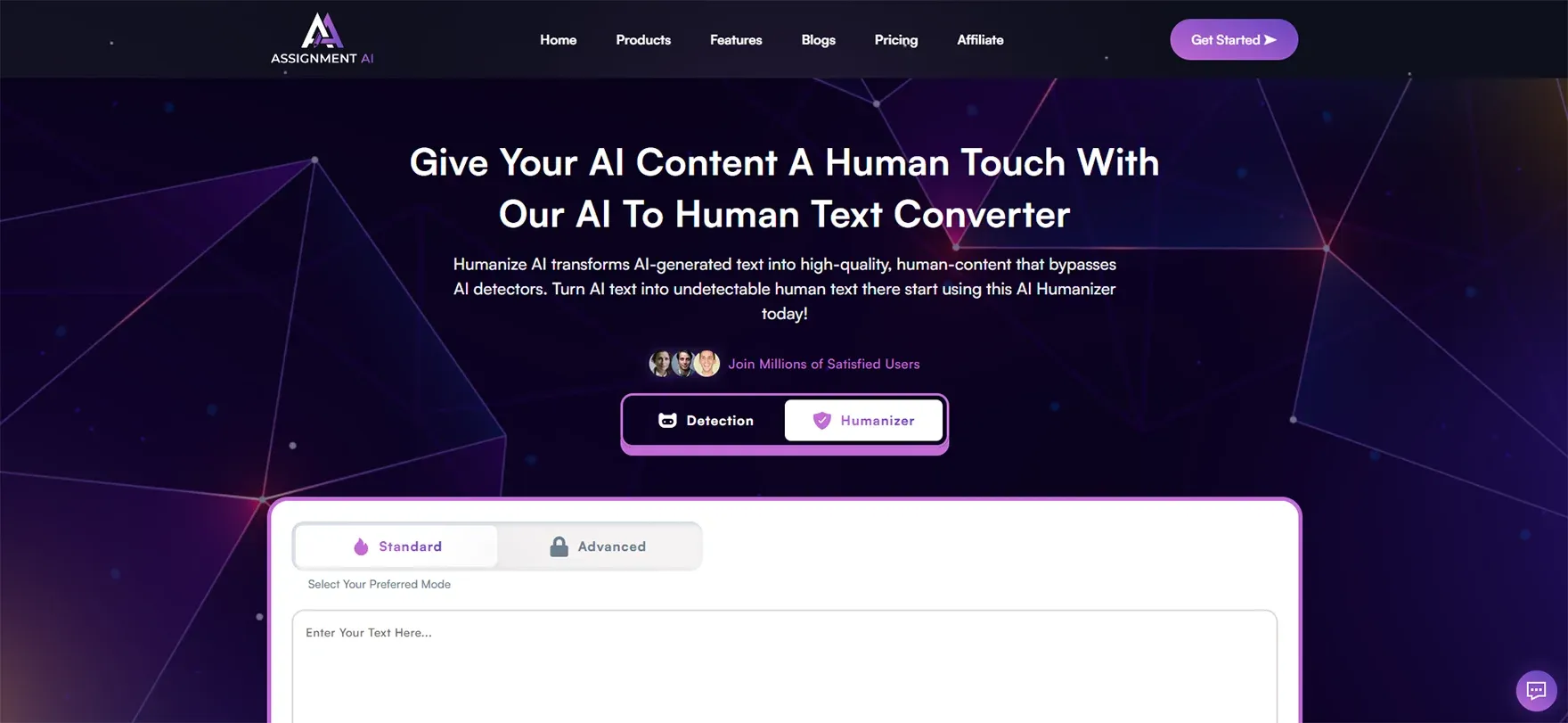
3. Bypassai
BypassAI helps freelancers and content creators humanize AI-written text quickly, making it easy to pass most advanced AI detection tools.
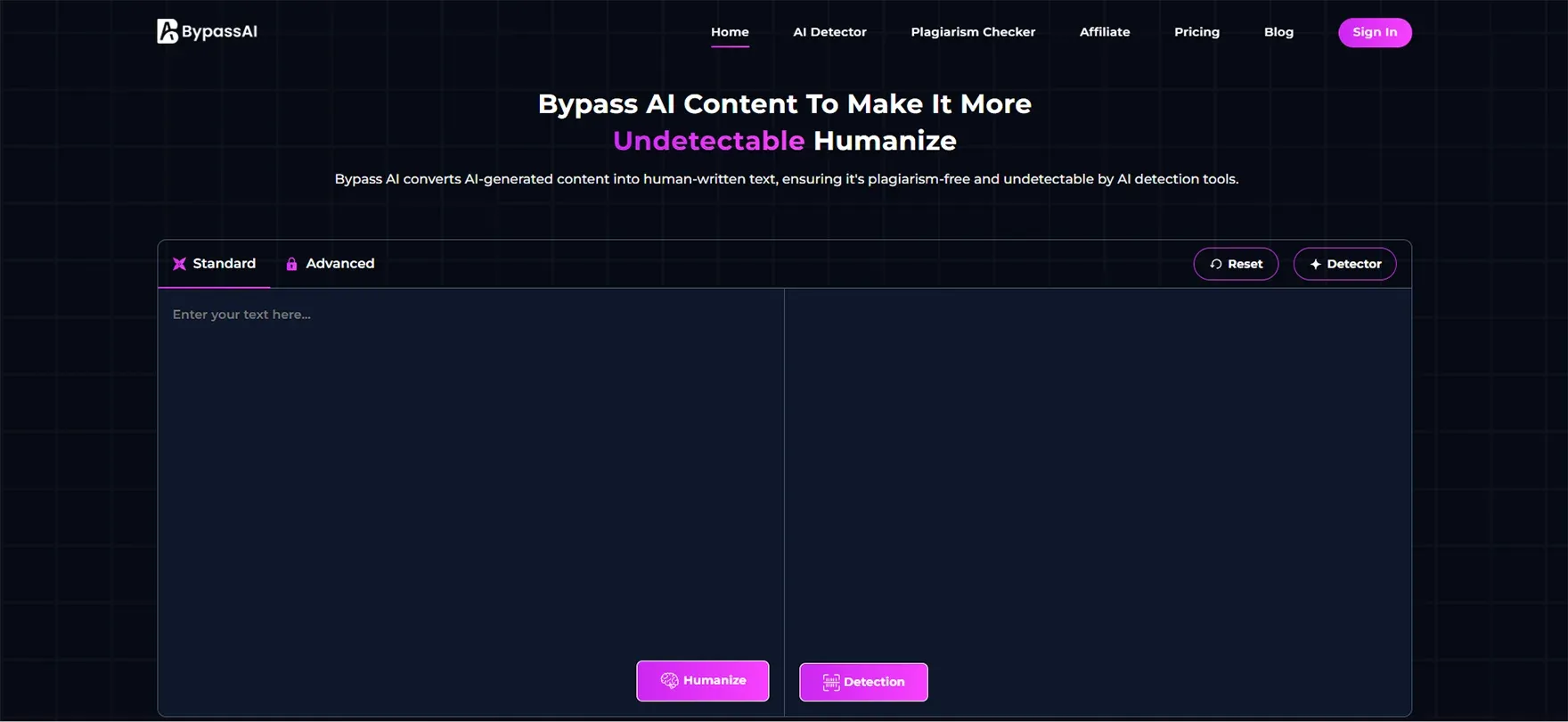
4. Quillbot
Quillbot is a powerful paraphrasing tool that refines grammar and rephrases content naturally, helping AI-generated text sound like real human writing.
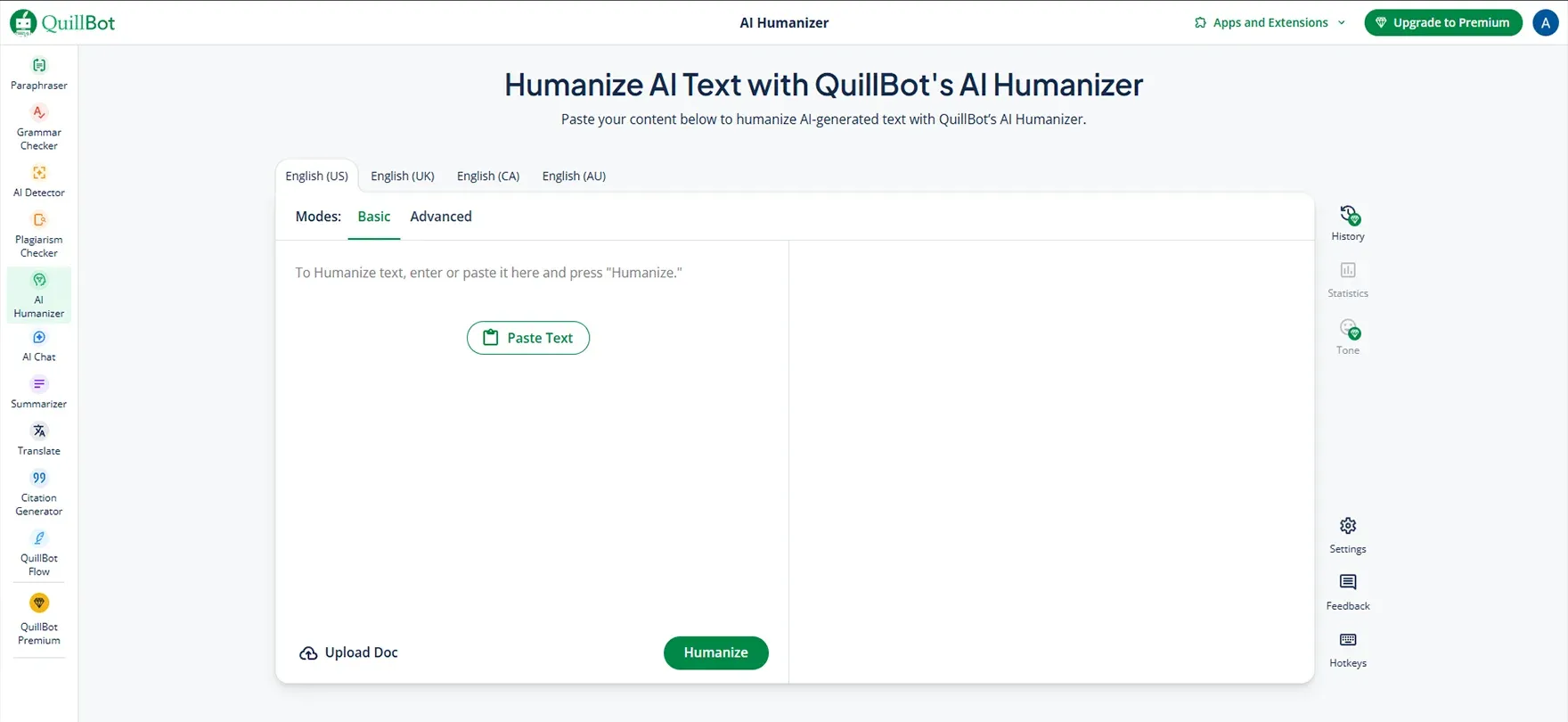
5. Zerogpt
Zerogpt is a simple and fast AI detection tool that accurately distinguishes between human and AI-written content with an easy-to-use interface.
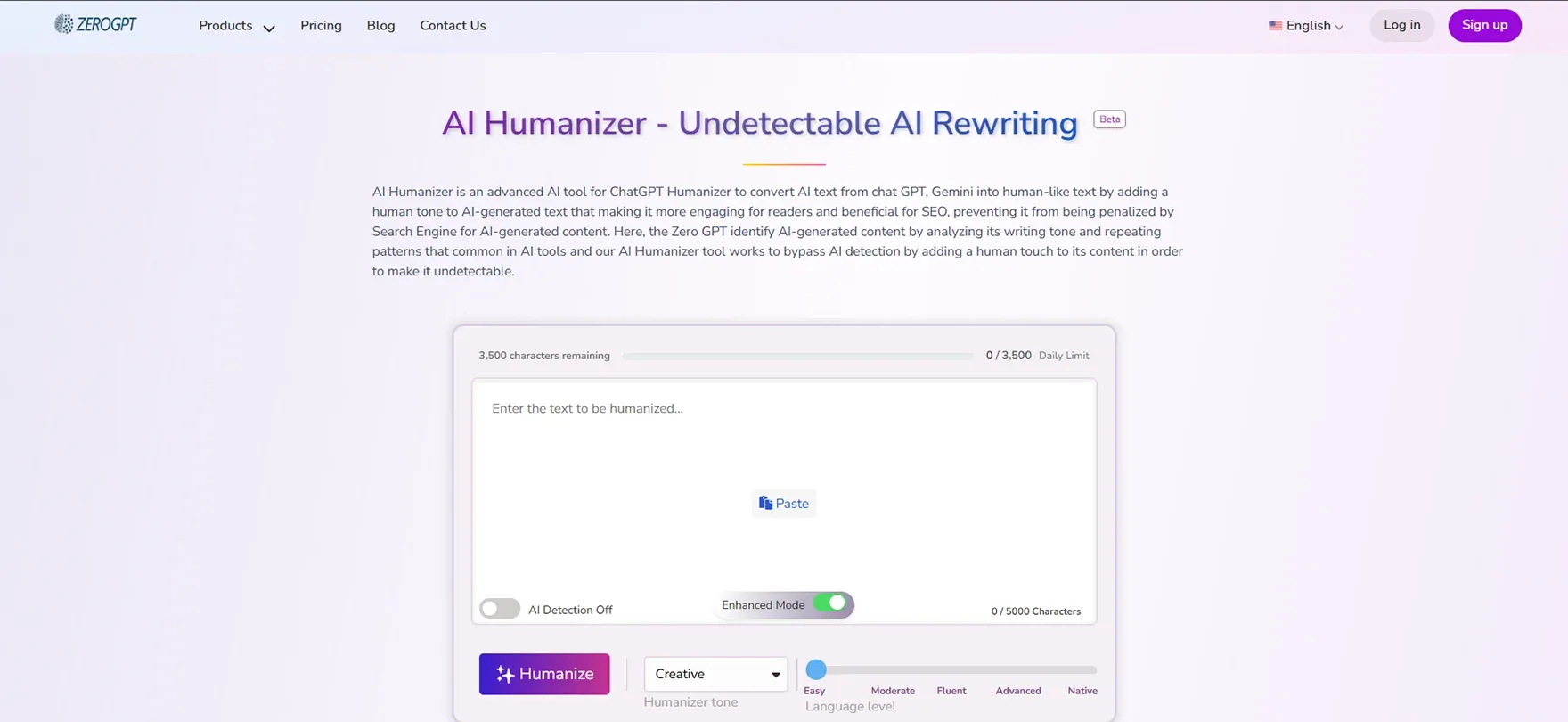
6. Copyleaks
Copyleaks offers advanced AI and plagiarism detection, trusted by universities and businesses to verify content originality and prevent duplication.

7. Originality AI
Originality AI is a premium detection tool widely used by publishers and bloggers to identify AI-generated content and maintain writing integrity.
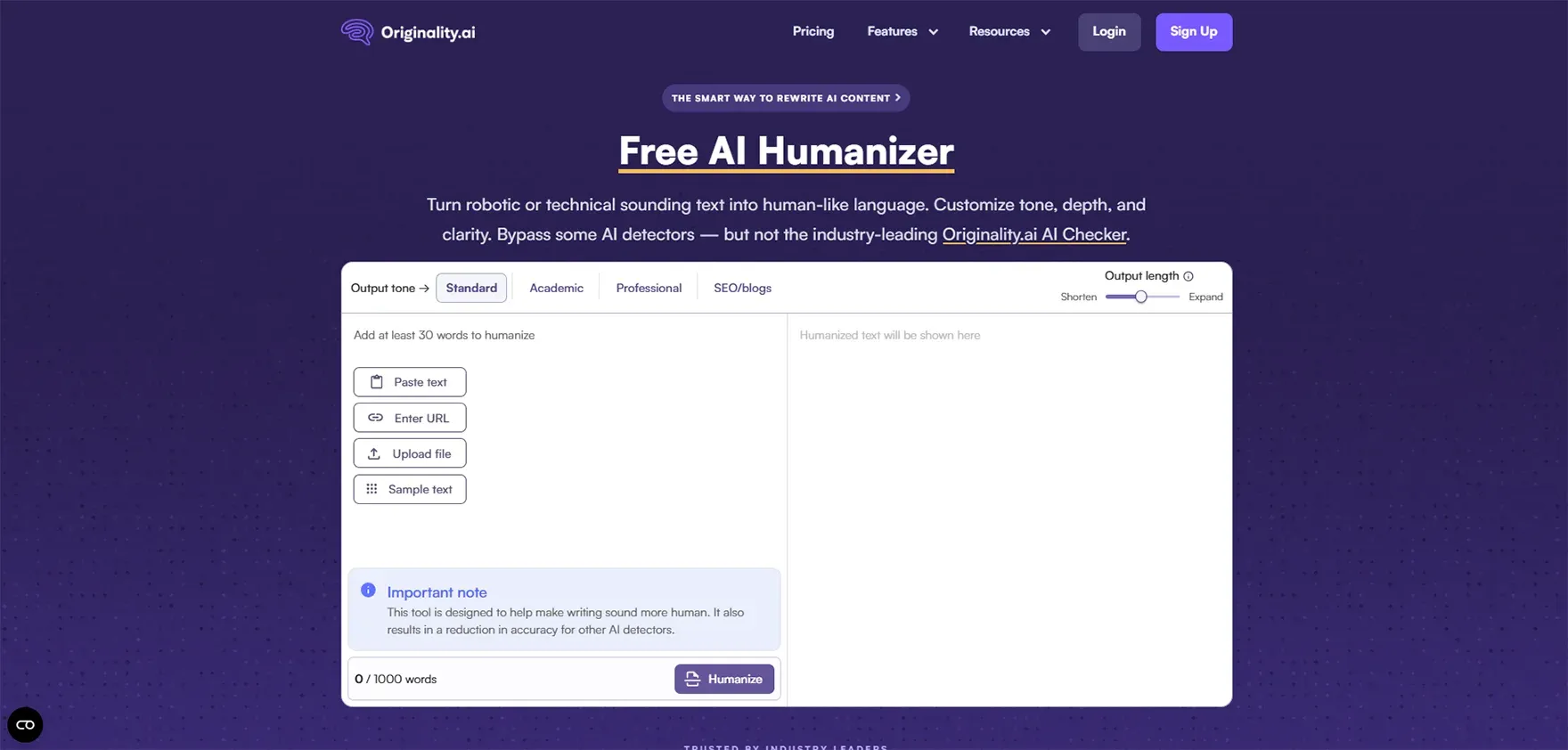
Should You Always Humanize AI Content?
This question doesn't have a one-size-fits-all answer. The need for humanization depends on several factors that every freelancer should consider before diving into the editing process.
Content Purpose and Audience play crucial roles in this decision. Technical documentation or data-heavy reports might benefit from AI's clear, structured presentation style. However, blog posts, marketing copy, and thought leadership pieces almost always need significant humanization to be effective.
Client Expectations should guide your approach. Some clients explicitly request AI assistance for efficiency and cost-effectiveness, while others prioritize authenticity and human insight. Understanding these preferences upfront can save time and prevent misunderstandings.
Time and Budget Constraints often determine how much humanization is feasible. If a client needs 20 blog posts in a week at a low rate, extensive humanization might not be economically viable. However, premium projects with higher budgets typically warrant the extra effort.
Industry and Niche Considerations matter significantly. Industries like healthcare, finance, or legal services often require more authoritative, human-crafted content due to regulatory concerns and the need for expertise demonstration. Creative industries almost always benefit from humanized content.
Long-term Brand Building versus one-off projects should influence your decision. If you're building ongoing relationships with clients or working on content that represents your personal brand, investing in humanization pays dividends over time.
SEO and Algorithm Considerations are evolving rapidly. While search engines don't explicitly penalize AI content, they do reward engaging, authoritative content that demonstrates expertise – qualities that humanized content typically exhibits more effectively.
The smart approach is to develop different levels of humanization based on project requirements. Create a tiered system: basic humanization for quick turnaround projects, moderate humanization for standard work, and extensive humanization for premium or strategic content.
Common Mistakes Freelancers Make While Humanizing AI Content
Learning from common pitfalls can save you time and help you avoid issues that could damage client relationships or reduce content effectiveness.
Avoid these common humanization pitfalls:
1. Over-Humanizing Issues
Adding too many personal anecdotes that overshadow main content
Making content too casual for professional contexts
Losing focus on original purpose and key messages
Transforming informative content into personal blogs
2. Consistency Problems
Mixing corporate and casual tones within same piece
Humanizing sections independently without considering overall flow
Creating jarring reading experiences with inconsistent voice
Failing to maintain client's established brand voice
3. Content Quality Issues
Adding irrelevant personal stories that don't add value
Focusing only on surface-level changes like contractions
Neglecting deeper structural and logical flow improvements
Introducing factual errors while adding creative elements
4. SEO and Performance Mistakes
Removing important keywords while making content conversational
Restructuring content in ways that hurt search visibility
Ignoring meta descriptions and headers during humanization
Sacrificing technical optimization for casual tone
5. Process and Strategy Errors
Rushing the humanization process for quick results
Not testing different approaches for different content types
Failing to develop client-specific style guidelines
Starting from scratch with each project instead of systematizing
6. Professional Mistakes
Imposing personal writing style on all clients
Not measuring results to improve humanization techniques
Treating humanization as one-size-fits-all solution
Failing to communicate approach and value to clients
The path to mastering AI content humanization involves recognizing these pitfalls and developing systematic approaches to avoid them. Each mistake is a learning opportunity that can improve your skills and increase your value as a freelancer.
Conclusion
The future of freelance content creation lies in skillfully blending AI and human writing to achieve the best results. Successful freelancers will be those who can humanize AI-generated content, making it feel authentic, valuable, and truly engaging. By gradually applying the strategies in this guide, measuring their impact, and refining them based on feedback, you can build your unique approach to AI humanization that sets you apart in the market.
If you’re looking for a reliable partner to help you detect and humanize AI content quickly, AI Checker Pro is a great solution. It accurately identifies AI-written text and offers user-friendly tools to humanize your content effortlessly. Whether you're working on blogs, assignments, or professional articles, AI Checker Pro makes the process simple, fast, and effective—perfect for freelancers who value both quality and time.
FAQs
1. What does 100% human content mean?
100% human content means writing that feels, sounds, and engages like it's written by a human, including natural tone, personal experiences, and emotional connection.
2. Why does AI content get flagged as non-human?
AI content gets flagged due to repetitive patterns, overly perfect grammar, generic examples, emotional detachment, and inconsistent writing tone.
3. How can freelancers check if their AI content looks human?
Freelancers can use read-aloud tests, AI detection tools, peer reviews, client feedback, and engagement metrics to check human-likeness of their content.
4. What are the best techniques to humanize AI content?
Key techniques include voice personalization, storytelling, adding personal experiences, structural variety, conversational elements, and intentional imperfections.
5. Should you always humanize AI content?
Not always. It depends on content type, client expectations, industry standards, project budget, and whether content is for long-term branding or quick tasks.
6. What are common mistakes in humanizing AI content?
Mistakes include over-humanizing, inconsistent tone, removing keywords, adding irrelevant stories, rushing edits, and not aligning with client voice or SEO goals.
7. What tools can help humanize AI content?
Useful tools include AI Checker Pro, AssignmentGPT AI, Bypassai, Quillbot, Zerogpt, Copyleaks, and Originality AI to check and improve AI-generated content.

Nathan Porter
Content writer at @Aichecker
I am a content writer at AI Checker Pro, where I craft engaging, SEO-optimized content to enhance brand visibility and educate users about our AI-driven solutions. My role involves creating clear, impactful messaging across digital platforms to drive engagement and support company growth.


